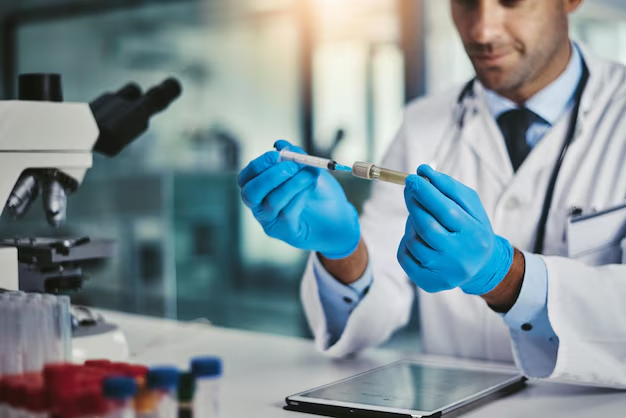Understanding Lymphoma and Blood Tests: What You Need to Know
Detecting diseases can often feel like piecing together a complex puzzle, with various tests and symptoms converging to provide a clearer picture. When it comes to lymphoma, a type of cancer that affects the lymphatic system, many wonder how this condition can be detected and whether a simple blood test could hold the answer. In this guide, we'll explore the role blood tests play in diagnosing lymphoma, as well as other key facets of detection and diagnosis that every concerned individual should know.
Can Lymphoma Be Detected With a Blood Test?
While blood tests are integral to modern medical diagnostics, they are often just one piece of the pie when diagnosing conditions like lymphoma. At their core, blood tests are crucial for:
- Identifying abnormalities: Blood tests can reveal abnormal levels of certain blood cells that often accompany lymphoma.
- Assessing overall health: They help evaluate general organ function, which might be affected by lymphoma.
- Supporting diagnosis: Combined with other tests, blood results can steer healthcare professionals toward or away from a lymphoma diagnosis.
However, a blood test alone usually isn't definitive for diagnosing lymphoma. The complexity of this disease means a multi-faceted diagnostic approach is often necessary.
Types of Blood Tests Involved
Complete Blood Count (CBC): A CBC measures the number and types of cells in the bloodstream, including red and white blood cells and platelets. Changes in these levels might indicate lymphoma, particularly if certain types of white blood cells are elevated or diminished.
Blood Chemistry Tests: These check the levels of various substances in your blood and can signal how well your organs are functioning. Abnormal liver or kidney function can sometimes be linked to lymphoma.
Lactate Dehydrogenase (LDH) Test: LDH is an enzyme found in many body tissues. High levels of LDH in your blood can be associated with tissue damage caused by lymphoma.
Beyond Blood: Additional Diagnostic Tools
While blood tests are invaluable, they usually work best in concert with other diagnostic methods to paint an accurate picture. Here's a look at other tools commonly employed in detecting lymphoma:
Imaging Tests
CT Scans: Also known as CAT scans, these use X-rays to create detailed images of the body's internal structures. CT scans can identify enlarged lymph nodes or tumors.
MRI: Magnetic Resonance Imaging provides high-resolution images of the body's organs, helping detect abnormal tissue growth associated with lymphoma.
PET Scans: Positron Emission Tomography scans are useful for highlighting areas of high metabolic activity that often accompanies cancer.
Biopsy Procedures
- Lymph Node Biopsy: Involves taking a sample of lymph node tissue to look for cancer cells. It's considered the gold standard for diagnosing lymphoma.
- Bone Marrow Biopsy: Helps determine whether or not the lymphoma has spread to the bone marrow.
Understanding Lymphoma Symptoms
Symptom recognition is another critical aspect of diagnosing lymphoma. Knowing what to look for can accelerate the path to diagnosis and treatment.
Common Symptoms of Lymphoma
- Swollen lymph nodes: These might appear as lumps under the skin, often in the neck, armpit, or groin.
- Persistent fatigue: Extreme exhaustion that doesn't go away with rest.
- Fevers and night sweats: Often occurring without infection.
- Unexplained weight loss: Losing a significant amount of weight without trying.
- Itchy skin: Occasionally accompanies lymphoma.
Risk Factors and Prevention Insights
Understanding risk factors for lymphoma can provide crucial insights into prevention. While some risk factors are beyond control, awareness can lead to proactive health management.
Key Risk Factors
- Age: Certain types of lymphoma are more common in adults over 60.
- Gender: Males are slightly more at risk for some forms.
- Family History: Genetics can play a role, though it's not entirely understood how significant this might be.
- Immune System Health: Chronic infections or immune disorders can increase risk.
- Exposure to Certain Chemicals or Radiation: Occupational exposure in agriculture or certain industries can elevate risk.
Steps Toward Prevention
While there's no guaranteed way to prevent lymphoma, you can lower risk factors by:
- Maintaining a healthy immune system: This can be supported through a balanced diet, regular exercise, and adequate sleep.
- Minimizing exposure to harmful chemicals: Taking precautions when working with or around hazardous materials.
What to Consider After Diagnosis
Receiving a lymphoma diagnosis can be overwhelming. Understanding next steps and options is crucial in managing the condition effectively.
Treatment Options
- Chemotherapy: Commonly used to kill cancer cells rapidly.
- Radiation Therapy: Targets specific areas where cancer cells are concentrated.
- Biological Therapy: Boosts the immune system to fight cancer.
- Stem Cell Transplant: Replaces damaged bone marrow with healthy cells.
Ongoing Support and Monitoring
Living with lymphoma means regular monitoring and support. Engaging with healthcare providers, support groups, and rehabilitation services can help maintain quality of life.
Embracing a Positive Outlook
Though lymphoma is a serious condition, advancements in research and treatment continue to improve prognoses and outcomes. Early detection, supported by a range of diagnostic tools and tailored treatment plans, can significantly impact the journey through lymphoma, encouraging individuals to embrace a hopeful and informed perspective.
Quick Summary: Key Takeaways on Lymphoma and Blood Tests
- Blood Tests Are Crucial 🩸: While not definitive, they are vital in initial diagnostics.
- Symptoms Matter 🔍: Recognize them early to quicken the path to diagnosis.
- Multi-Diagnostic Approach 🧬: Includes imaging and biopsy for accurate diagnosis.
- Risk Management ⚠️: Awareness and lifestyle choices can influence risk.
- Treatment and Support 🤝: Various treatments exist, alongside essential support networks.
By understanding all facets of lymphoma detection, from symptoms to advanced diagnostic tools, individuals and their loved ones can navigate this challenging journey with confidence and clarity.
